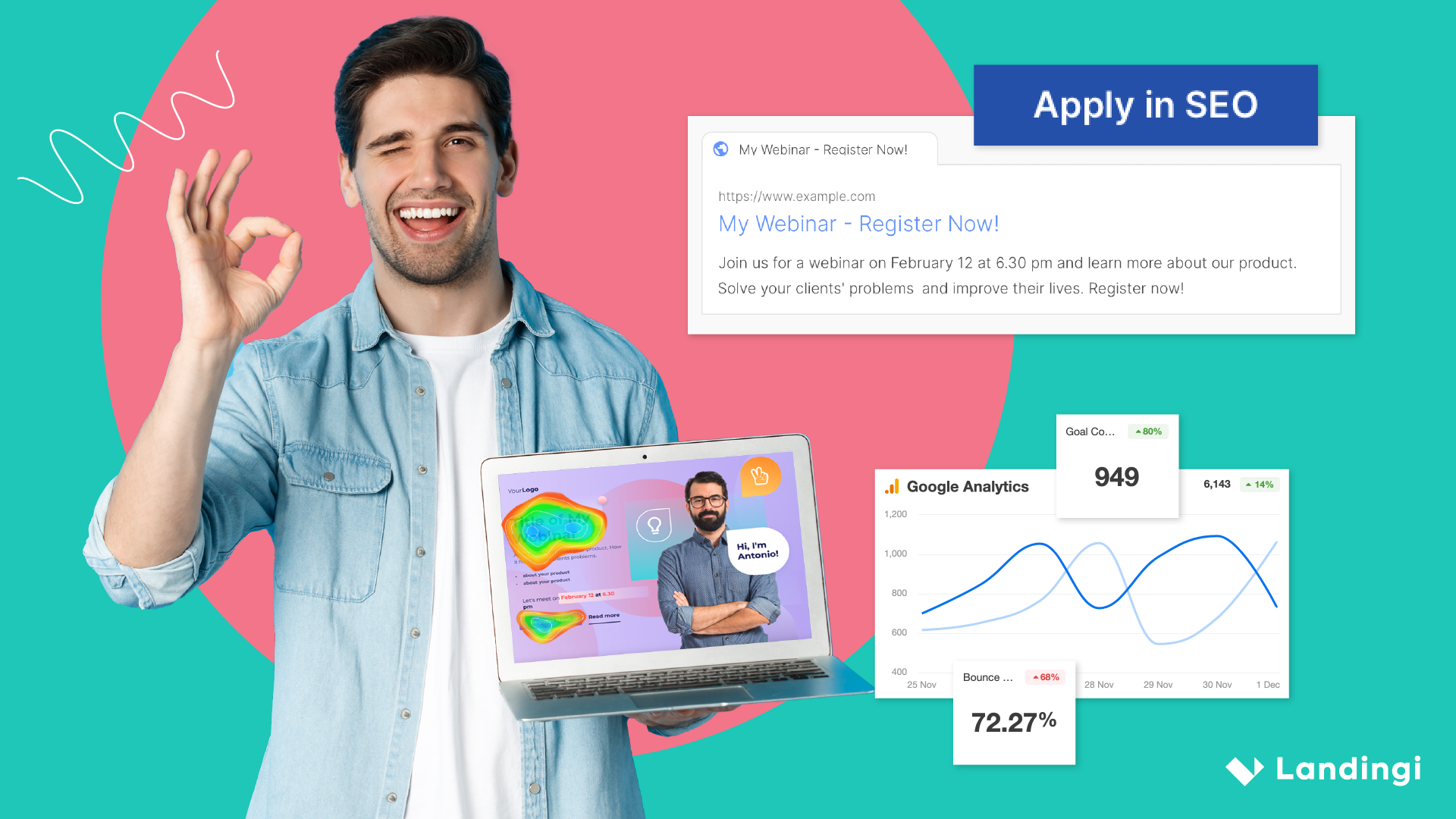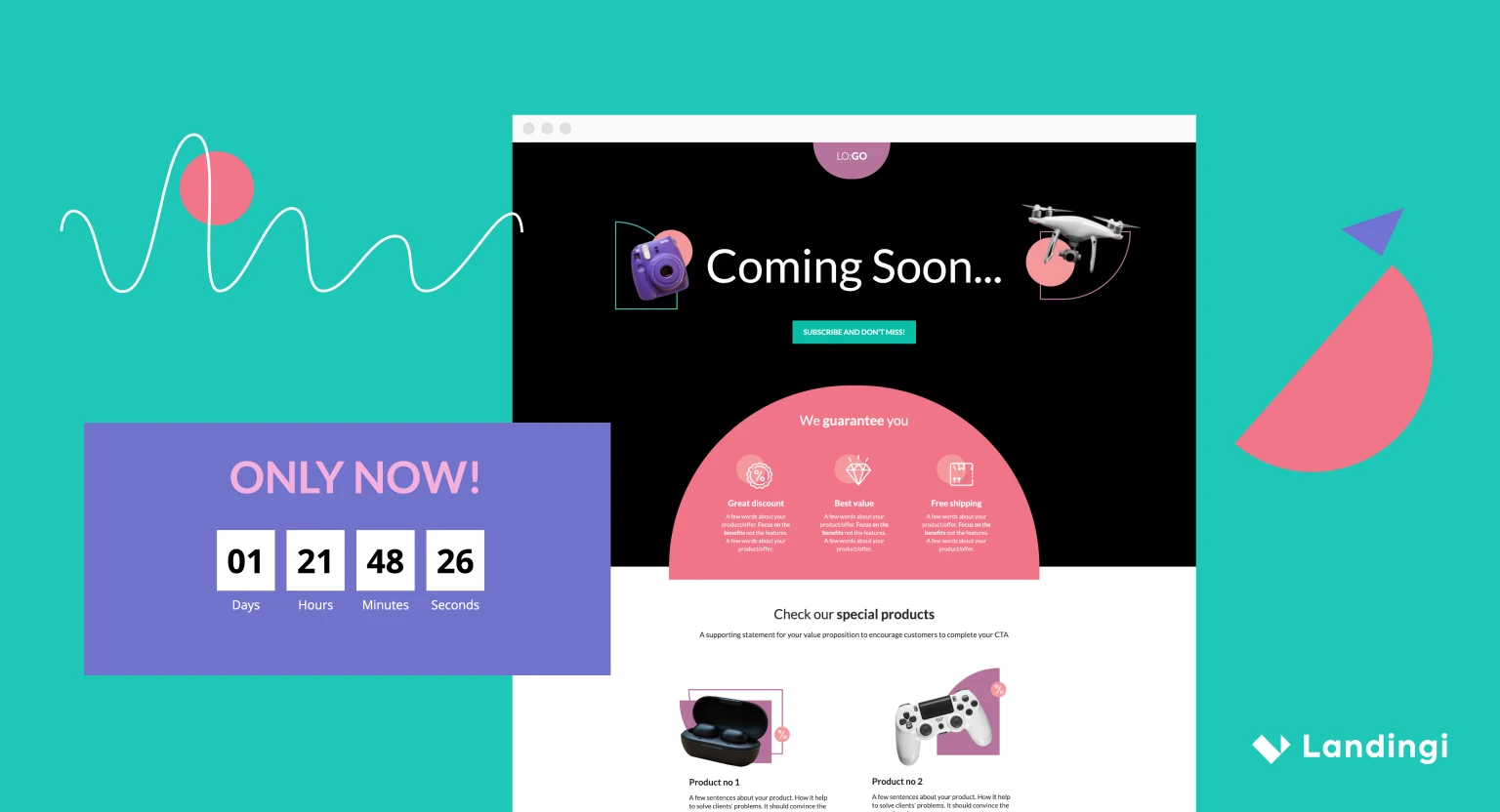Not many terms are as overplayed as ‘creative advertising’. But, as I aim to persuade you, there’s a foundation for it. Let’s kick off with the quote from Stephan Vogel (Ogilvy & Mather Germany’s Chief Creative Officer) that appears in Harvard Business Review article:
“Nothing is more efficient than creative advertising. Creative advertising is more memorable, longer lasting, works with less media spending, and builds a fan community…faster” (W. J. Reinartz, P. Saffert, Creativity in Advertising: When It Works and When It Doesn’t, 2013).
This is why it is still essential for marketers to stay in the loop and check how this idea works, how it evolves with the evolution of marketing, particularly today, in the digital era, when changes happen in the blink of an eye.
We’ll start with the basics, then move on to the best examples to get inspired, and subsequently delve into the most crucial details. Understanding these will allow you to create not only creative ads but also effective ones, as well as integrate them into your marketing campaigns.
It’s the last moment to whip up a flavorful, hot coffee.
Ready? Let’s get to it!
Make your sections smartable and let go of mundane manual tasks with Smart Sections! An easy way to manage bulk changes.
What Is a Creative Campaign?
A creative campaign goes beyond the confines of traditional advertising to strike a chord with its audience. It’s not just about pushing a product or service; it’s about telling a story, evoking emotion, and fostering a connection between the brand and its consumers.
At its core, a creative campaign is a coordinated series of promotional efforts that revolve around a unique theme or idea. These campaigns can span across multiple channels, such as social media, TV, radio, print, and online platforms, ensuring a consistent message but tailored to each medium’s strengths.
In today’s fully saturated ads world, creative campaigns offer a breath of fresh air, differentiating a brand from its competitors and fostering deeper, more meaningful connections with consumers.
What Is the Definition of “Elaboration” in the Context of Creative Advertising?
Elaboration, in the advertising domain, refers to the depth and breadth of cognitive processing that an individual dedicates to a received advertisement. It’s the extent to which a person thinks deeply about the content of an ad, its messages, implications, and the ideas it presents.
The Elaboration Likelihood Model (ELM)
A pivotal concept to understand when discussing elaboration is the Elaboration Likelihood Model (ELM). Developed by Richard E. Petty and John Cacioppo in the 1980s, ELM suggests that there are two primary routes to persuasion:
- Central Route: This is where elaboration plays a crucial role. When an individual is motivated and able to process an advertisement, they use the central route. Here, they critically analyze the ad’s content, evaluate its arguments, and reflect upon its implications.
- Peripheral Route: On the contrary, when an individual is either not motivated or unable to deeply process an advertisement, they take the peripheral route. Decisions or attitudes formed here are based on superficial cues like the celebrity endorsing a product or the catchiness of an ad’s jingle.
Why Elaboration Matters in Creative Advertising
There are at least three important reasons why elaboration potential should be freed up in your ad message.
- Depth of Engagement: A high level of elaboration suggests that the viewer is deeply engaged with the ad, increasing the chances of the message being remembered and acted upon.
- Building Stronger Attitudes: Messages processed through high elaboration, or the central route, often result in stronger and longer-lasting attitudes or opinions about the advertised product or service.
- Achieving Persuasion: For advertisers, achieving genuine persuasion is the gold standard. When viewers engage in high elaboration, they are more likely to be genuinely persuaded by the ad’s arguments, leading to desired actions such as purchases or brand loyalty.
As you can see, although ‘elaboration’ might seem like a simple term, its implications in the world of creative advertising are profound. It not only defines the depth of engagement with an ad but also serves as a key indicator of the advertisement’s effectiveness in achieving genuine persuasion.
What Constitutes “Artistic Value” in an Ad?
Artistic value in advertising goes beyond aesthetics. It’s the harmonious blend of visual elements, sound, narrative, and emotion to create a piece that not only promotes a product or service but also resonates with the audience on a deeper, more emotional level. It’s what transforms an advertisement from a mere marketing tool into a piece of art.
What are the Key Components of Artistic Value?
Artistic value consists of five core principles, which are subsequently:
- Visual Imagery: A high-quality and impactful visual representation is the foundation. Whether it’s through photography, animation, or any other medium, the visual component should be compelling and evoke emotion.
- Sound and Music: The auditory aspect of an ad, be it the voice-over, background score, or sound effects, plays a significant role in setting the mood and tone. A well-chosen track or sound can elevate the overall impact of the ad.
- Narrative Excellence: A well-crafted storyline or narrative can transport the viewer into the world of the ad, making the message more memorable. It’s the difference between telling and showing.
- Emotional Depth: The most artistically valued ads often strike an emotional chord, whether it’s joy, nostalgia, humor, or even sadness. It’s this emotional connection that makes an ad linger in one’s memory.
- Originality: Being unique and presenting a fresh perspective or idea is a cornerstone of artistic value. It’s about breaking away from the norm and presenting something unexpected.
Why Artistic Value Matters
- Audience Engagement: An ad with high artistic value captivates its audience, ensuring the message is not just seen but also felt and remembered.
- Brand Image: Such ads reflect positively on the brand, portraying it as sophisticated, thoughtful, and in tune with its audience’s sensibilities.
- Shareability: Ads with a strong artistic component are more likely to be shared, discussed, and even go viral, amplifying their reach without additional investment.
In essence, the artistic value of an ad is not just about making it look or sound good; it’s about creating a holistic experience that resonates with viewers, ensuring the brand’s message is effectively communicated and remembered.
What Are the Main Types of Creative Advertising?
It’s difficult to categorize the main kinds of creative advertisements when the nature of creativity is to defy types and break established trends. This results in continuous competition among advertisers, and companies are always outdoing each other in finding innovative ways to advertise. Despite these challenges, let’s try to pinpoint those that have been most prominent in recent years.
1. Unboxing Videos
These are especially popular on platforms like YouTube. They provide a first-hand experience of a product’s unveiling, making viewers feel the thrill of discovery. Brands often collaborate with influencers for unboxing, giving an authentic touch and reaching a broader audience.
2. Before-and-After Ads
Widely used on platforms such as Instagram and Pinterest, these ads showcase the transformational power of a product or service. Whether it’s for skincare products, fitness programs, or home renovations, seeing tangible results can be a compelling call-to-action for viewers.
3. User-Generated Content (UGC)
UGC thrives on platforms like TikTok, Facebook, and Instagram. Encouraging users to create content for a brand fosters community and trust. It’s authentic, relatable, and often more persuasive than traditional advertisements.
4. Slideshow Ads
Common on Facebook and LinkedIn, slideshow ads use a series of images or short video clips to convey a message. They’re versatile, allowing for storytelling, product showcases, or even a step-by-step guide, catering to both mobile and desktop users.
5. Carousel Ads
Found on platforms like Instagram and Facebook, these ads allow users to swipe through multiple images or videos within a single ad. Brands can showcase different products, share a multi-part story, or delve into the features of a single product in detail.
6. Cinemagraphs
A blend of static images and video, cinemagraphs bring part of a photo to life. Due to their mesmerizing nature, they’re great for platforms where visual aesthetics matter, like Instagram or Pinterest.
7. Interactive Quizzes and Polls
Platforms such as Facebook and Instagram Stories have made this possible. By engaging users in a fun, interactive manner, brands can gather insights while also promoting products or services.
Info: Interactive content can bring 2x more conversions than passive one. Also, it seems to be more efficient at the first stages of the customer journey, as it’s 93% successful in educating potential buyers compared to 70% obtained for static type. Quizzes drive most of the traffic to Buzzfeed (M. Mamgai, Interactive Content is the Future, 2023).
8. Infographics
Especially effective on LinkedIn or Pinterest, infographics present data or information visually. They’re shareable, informative, and can drive significant traffic, especially when they provide valuable insights.
9. AR and VR Experiences
Snapchat and Instagram, with their AR filters, allow brands to offer immersive experiences. From trying on makeup virtually to visualizing furniture in one’s room, AR and VR ads bridge the gap between virtual and real, enhancing user engagement.
10. Tutorial or How-to Videos
Platforms like YouTube or Pinterest are rife with tutorial videos. By providing value in the form of knowledge or skills, brands establish authority in their domain and foster trust among viewers.
11. Comparison Ads
Common on platforms like YouTube and tech blogs, these ads juxtapose products or services, highlighting the superiority or distinctiveness of one over the other. They are especially effective for audiences on the verge of making purchasing decisions and are looking for clear differentiators.
12. Profile Features
Especially popular on Instagram and Facebook, these highlight a person’s story or journey in association with a product or brand. It might be a behind-the-scenes look at a brand ambassador, an employee’s day in life, or a customer’s success story. These ads humanize the brand, making it more relatable to the audience.
13. Reaction Videos
Increasingly prevalent on platforms like YouTube and TikTok, reaction videos capture individuals or groups responding to content, products, or even other videos. The genuine, often unscripted nature of these videos can be both entertaining and persuasive, especially when viewers resonate with the reactions showcased.
14. Meme Advertising
Capitalizing on internet culture, meme advertising thrives on platforms like Instagram, Twitter, and Reddit. These ads infuse humor and relatability, making content viral-worthy. However, brands need to tread carefully to ensure they capture the meme’s essence without appearing out of touch.
To maximize the effectiveness of online advertising, brands need to match the ad type with the platform’s nature and its audience’s preferences. What is effective on Facebook when applied to youngsters may bring no effect while targeting elder people via typical TV advertisements.
Which Type of Creative Advertising Is Most Effective for Online Platforms?
On ephemeral platforms like Instagram, Snapchat, and Facebook Stories, the thrill of unboxing videos or the interactive nature of polls and quizzes thrives. These fleeting yet engaging formats captivate users, drawing them closer to the brands they love. Augmented and virtual reality experiences, especially on Snapchat, offer users a chance to immerse themselves in branded adventures, from trying out a new shade of lipstick to envisioning a piece of furniture in their living room.
On video-centric platforms like YouTube and TikTok, content needs to be both informative and engaging. Reaction videos have surged in popularity, capturing genuine responses to a plethora of content, from movie trailers to music releases. Brands can also assert their industry authority through insightful tutorials or how-to videos, guiding users and solidifying brand trust. Comparison ads, prevalent among tech or beauty segments, offer viewers a clear perspective, aiding their purchasing decisions.
Platforms like LinkedIn, designed for professionals, call for a different approach. Here, profile features that shed light on employees or company culture can resonate profoundly. The content should be insightful and industry-relevant, like infographics presenting data in a visually compelling manner.
How Does Creative Marketing Work?
The key lies in a deep understanding of the target audience, uncovering their desires, challenges, and behaviors. This insight shapes a narrative that goes beyond promoting a product, aiming to create a genuine emotional bond with the consumer.
The creation process is a synergy between designers, copywriters, and strategists. Together, they develop campaigns that are not only visually stunning but also resonate with the brand’s ethos and the audience’s core values. It’s a delicate balance of artistry and intention.
However, the journey doesn’t end with the campaign’s launch. Continuous analysis of its performance is essential. By evaluating metrics such as engagement and conversion rates, brands refine their approach, ensuring that each campaign is more tailored and effective than the last.
What Makes Great Creative Advertising?
Great creative advertising is the alchemy of several essential elements:
- Relevance: An ad should resonate with its target audience, addressing their needs, aspirations, or pain points directly.
- Emotion: Whether it’s humor, nostalgia, or empathy, ads that evoke strong emotions create lasting impressions.
- Visual Appeal: Striking imagery or captivating graphics can make an advertisement stand out in a crowded media landscape.
Info: The brain processes visual cues 60,000 times more rapidly than textual ones, with 90% of the information it takes in being visual in nature (H. Eisenberg, Humans Process Visual Data Better, 2014).
- Simplicity: Sometimes, less is more. An uncomplicated message, delivered clearly, can be more effective than a complex one.
- Call to Action (CTA): Great ads motivate the audience to take a specific action, be it making a purchase, signing up, or simply learning more.
- Authenticity: Today’s consumers value authenticity. Ads that feel genuine and true to the brand’s identity foster trust and loyalty.
- Adaptability: In our multi-platform world, a successful ad needs to work across different mediums, from print to digital to TV.
- Data-Driven: Behind every successful campaign is a robust analytics strategy, ensuring the message reaches the right audience at the right time.
Is Originality a Key Component of Creative Advertising?
Originality is the distinguishing factor that sets one campaign apart from countless others, offering viewers a fresh perspective or a unique take on a familiar theme. Originality isn’t just about being different; it’s about presenting ideas in a novel way that resonates, evoking curiosity and engagement.
However, originality for the sake of being different can be counterproductive. It’s crucial that the original content aligns with the brand’s message and values. Misaligned creativity can confuse the audience or, worse, alienate them. Thus, while originality is a potent tool, it needs to be wielded with care, ensuring it serves the broader goals of the campaign.
Can an Ad Campaign Be Successful Without High Artistic Value?
Yes, because the essence of a campaign lies in its ability to effectively communicate a message, resonate with the target audience, and prompt a desired action. There are instances where simple, straightforward advertisements have achieved remarkable results because they struck the right chord with the audience or addressed a pressing need.
Sometimes the only goal of advertising is to spread popularity or build reach for a product that is commonly known in terms of benefits, values, etc. It’s the case of simple ads by LinkedIn without any messaging but the company’s name and brand colors. The company has the largest share of US B2B display ad spending. In 2021 it was 32.2% of the $5.09 billion (A. Lebow, LinkedIn holds a third of all US B2B digital display ad revenue, 2021).
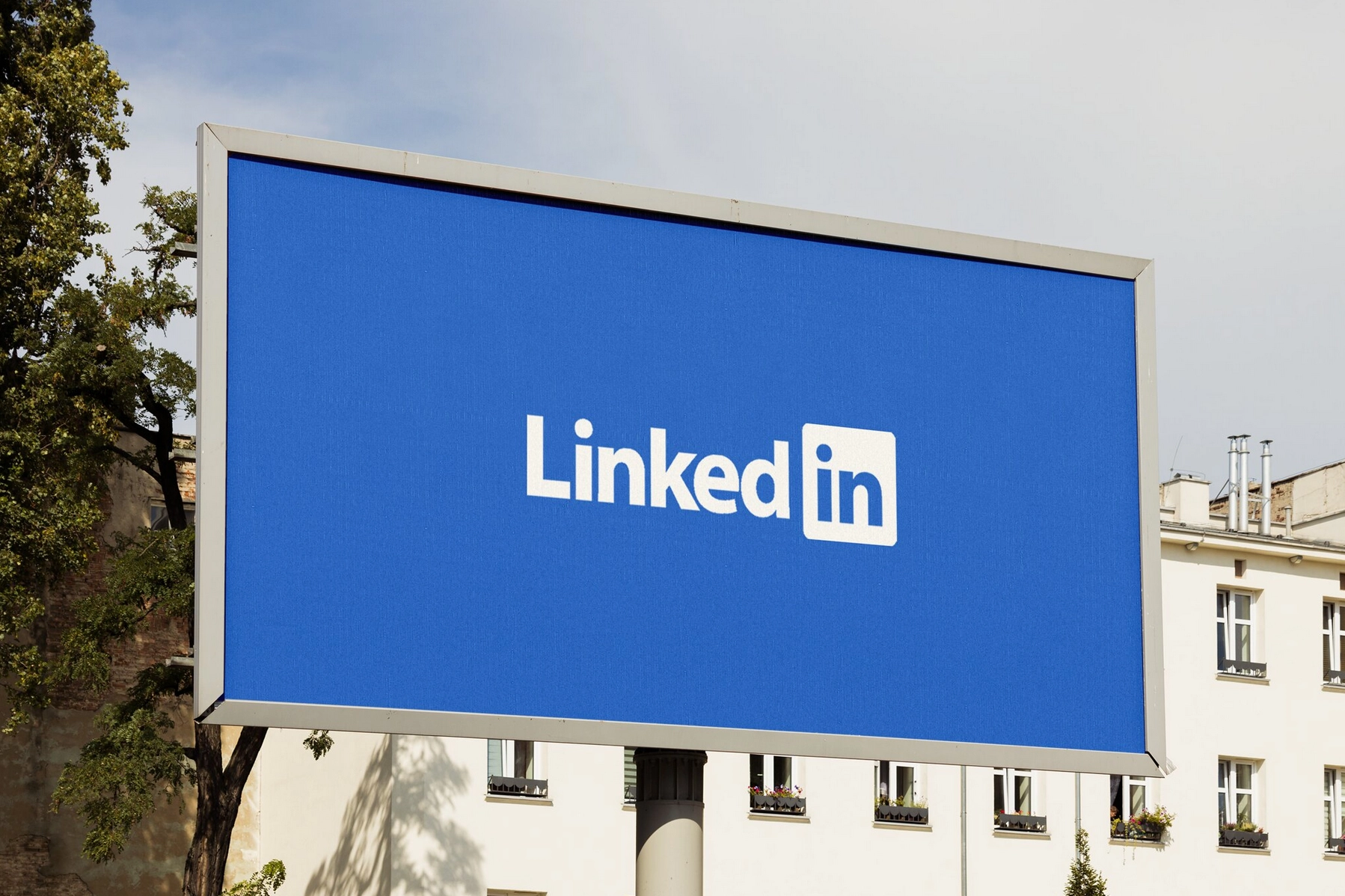
Nevertheless, artistic value often amplifies a campaign’s impact. It can captivate viewers, create a memorable impression, and elevate the overall perception of a brand. In a media-saturated environment, artistry can be the differentiating factor that makes an advertisement stand out.
It’s crucial to remember that artistry should never overshadow the core message. A visually stunning campaign that fails to communicate its intended message or misses its target audience might fall short in achieving its goals.
Which Brands are Known for Their Outstanding Creative Advertisements?
Many brands have become synonymous with outstanding creative advertising over the years.
Nike, with its empowering “Just Do It” campaigns, has left an indelible mark on the world of sports advertising.
Apple‘s minimalist yet innovative ads have consistently showcased its products as cutting-edge.
Coca-Cola has tapped into emotions and global unity with campaigns like “Share a Coke” and holiday-centric ads.
Dove‘s “Real Beauty” campaign challenged beauty standards, sparking global conversations.
And lastly, Old Spice rejuvenated its brand image with quirky, unexpected commercials that became viral sensations. These brands, among others, have set benchmarks in creative advertising, blending artistry with impactful messaging.
Of course, this list can be extended at least twice. We’ll see it well below once jump to another few real-life examples.
What are the Best Creative Ads Ever?
Let’s take another step ahead into practice and check the most outstanding advertisements from past decades.
Take lessons from the best in the business!
#1 Best Original Creative Ad: Red Bull
In the world of audacious advertising, Red Bull’s Stratos Jump stands out as a masterstroke. In 2012, the world watched with bated breath as Austrian skydiver, Felix Baumgartner, ascended to the stratosphere and plunged 128,000 feet to Earth. This wasn’t just an extraordinary human achievement; it was also a branding phenomenon.
Red Bull, known for the slogan “gives you wings,” took their brand identity to new heights, both literally and metaphorically. This event perfectly encapsulated risk-taking, adventure, and boundary-pushing, resonating deeply with Red Bull’s brand ethos.
The Stratos Jump was more than just a stunt; it was a vivid reminder of the power of bold branding in the digital age, proving that with the right vision, brands can truly soar.
By turning Baumgartner’s leap from the edge of space into a global spectacle, they not only captured worldwide attention but solidified their place in advertising history.
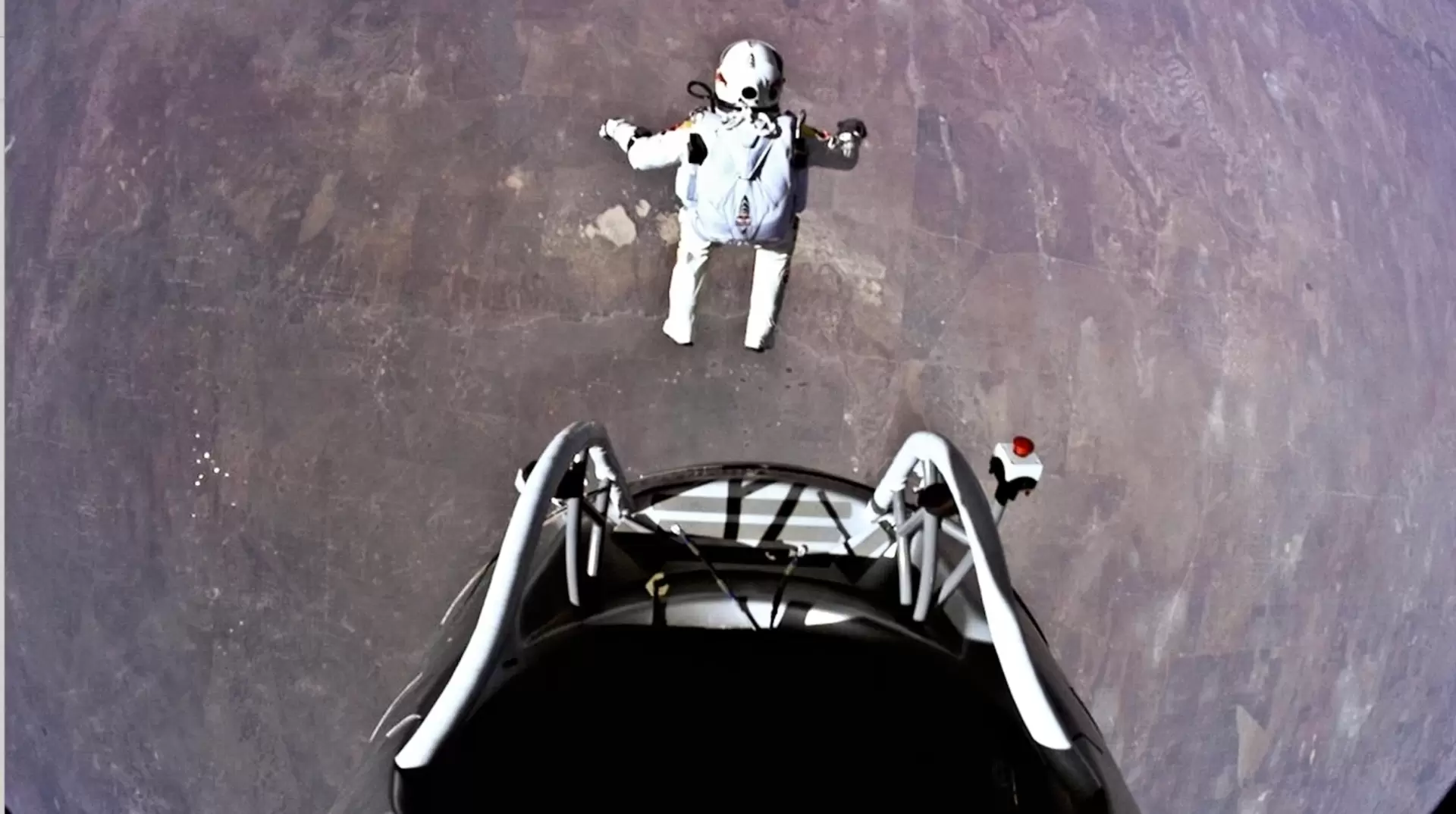
2. Best Flexible Creative Ad: McDonald’s
McDonald’s “I’m Lovin’ It” campaign, launched in the early 2000s, stands as a beacon of adaptable branding. Beyond its catchy tune, its true brilliance lay in its flexibility.
Effortlessly tailored to TV spots, radio jingles, billboards, digital banners, and packaging, the slogan retained its essence across all platforms. By ensuring the message thrived in diverse media landscapes, from urban to rural, from digital to traditional, McDonald’s showcased the power of a message built for widespread resonance, epitomizing the effectiveness of truly flexible advertising.
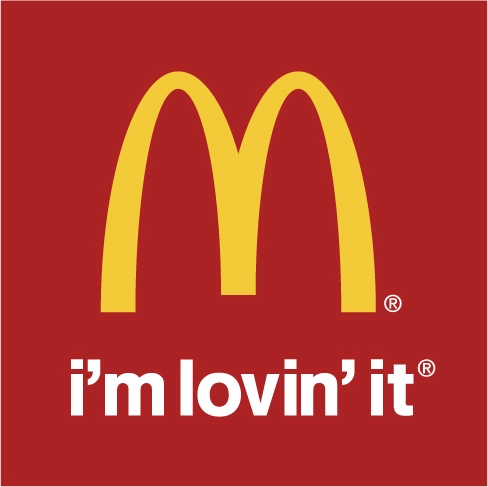
#3 Best Elaboration Creative Ad: Budweiser
Among the pantheon of memorable advertisements, Budweiser’s “Puppy Love” Super Bowl spot distinctly stands out. Aired during the 2014 Super Bowl, it ignited a real furor.
It tells a tale of a puppy’s unyielding bond with a Clydesdale horse. The narrative, while simple, was rich in emotional beats, driving the audience to become more involved, to think deeper, and to truly ‘elaborate’ on the brand’s message. The journey of the determined puppy, continuously seeking out its equine friend, was designed to engage viewers’ emotions, ensuring the story lingered long after the ad had ended.
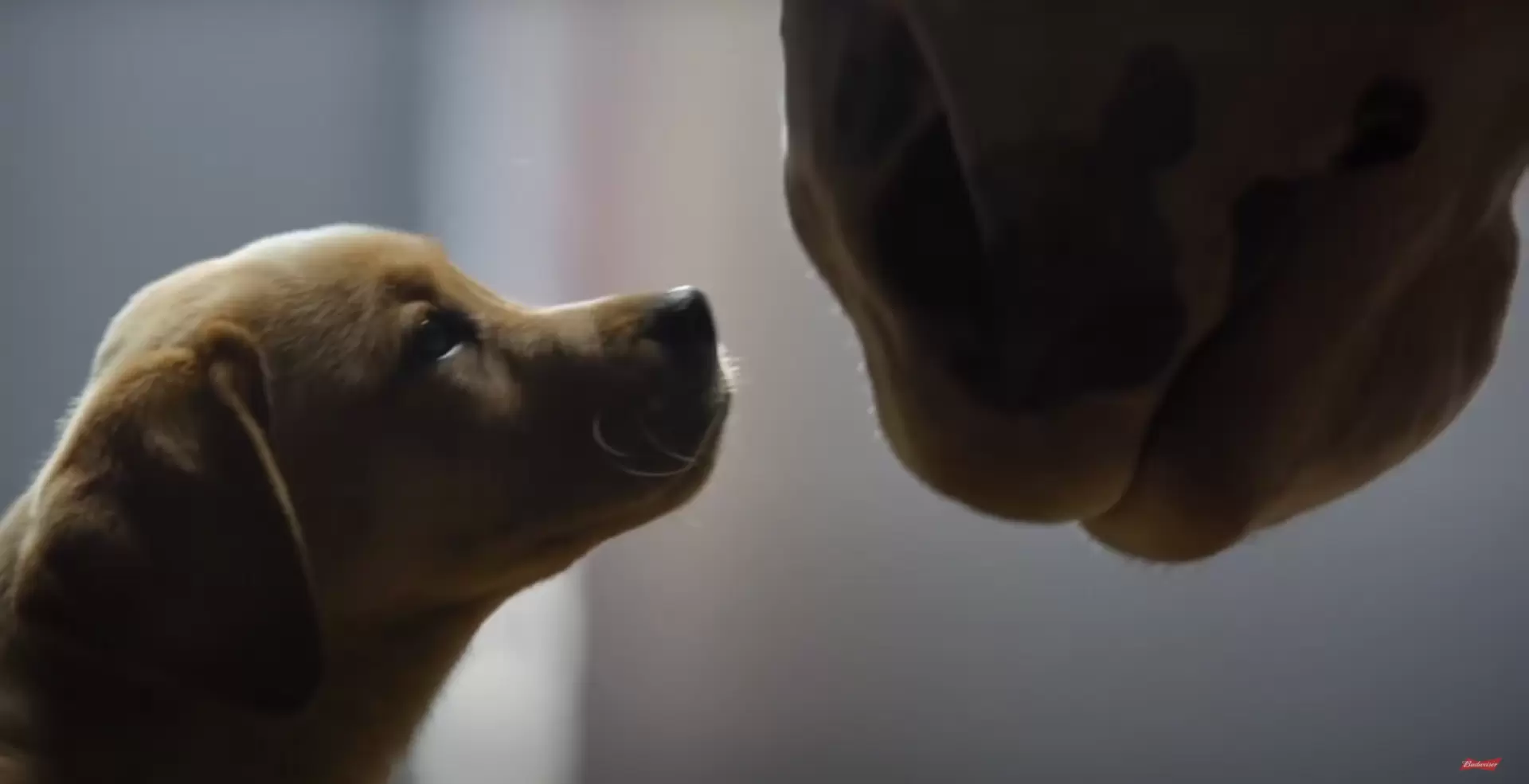
By leveraging the elaboration technique, Budweiser didn’t just create a commercial; they fashioned a poignant narrative that invited viewers to reflect on themes of friendship, loyalty, and perseverance. While the product – the beer itself – remained on the periphery, the brand became synonymous with deep emotional connections and sparked positive sentiments.
#4 Best Synthesis Creative Ad: Cadbury
Cadbury’s “Gorilla” advertisement, which graced screens in 2007, stands as a brilliant exemplar of synthesis in advertising. At its heart, the ad features an unexpected protagonist – a gorilla – paired with the iconic drum solo from Phil Collins’ “In the Air Tonight.”
What makes this ad a masterpiece of synthesis is its ability to meld disparate elements into a cohesive and compelling narrative. The unlikely fusion of a chocolate brand with a gorilla and a classic rock track might seem incongruous on paper, but in execution, it creates an evocative emotional experience. By interweaving visual storytelling, music, and brand imagery, Cadbury crafted an ad that transcended traditional product promotions.
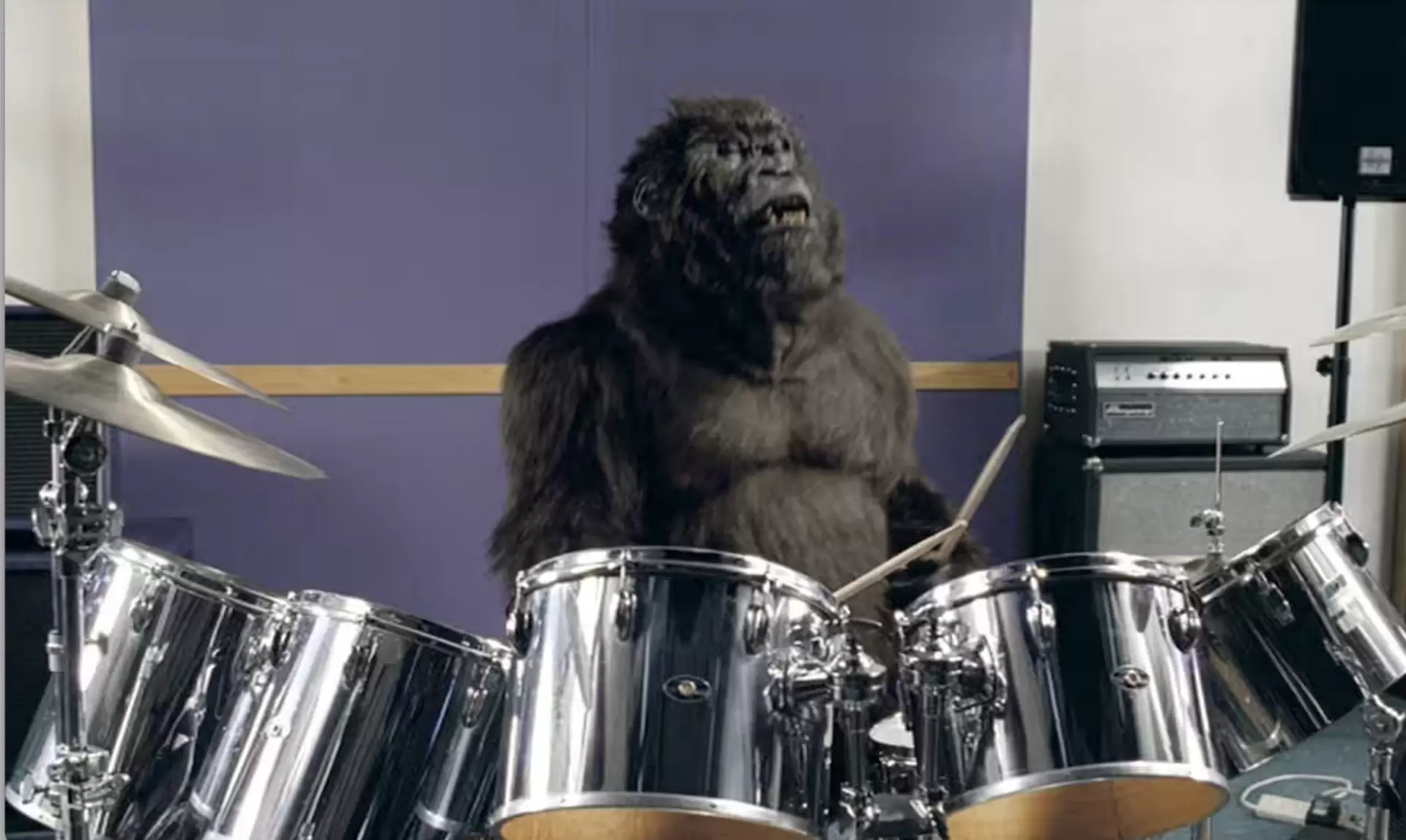
#5 Best Artistic Value Creative Ad: Volvo
Among other advertising campaigns, Volvo’s “Epic Split” spot, with the mesmerizing performance of Jean-Claude Van Damme, is a special one since it transcends traditional commercials to stand as an art masterpiece.
The scene is elegantly set, with Van Damme poised between two reversing Volvo trucks, gradually performing his iconic split. As Enya’s haunting “Only Time” plays, the viewer is transported into a moment of sheer cinematic artistry. The ad seamlessly blends breathtaking visuals, impeccable direction, and a riveting soundtrack, elevating it beyond just product promotion.
More than showcasing the precision and control of Volvo trucks, the ad becomes a visual metaphor for excellence, strength, and grace. By choosing such a high-concept and beautifully executed portrayal, Volvo didn’t just create an ad – they crafted a piece of art. “Epic Split” serves as a sterling reminder that when brands invest in artistic value, the result can be advertising that leaves an enduring imprint on the cultural landscape.
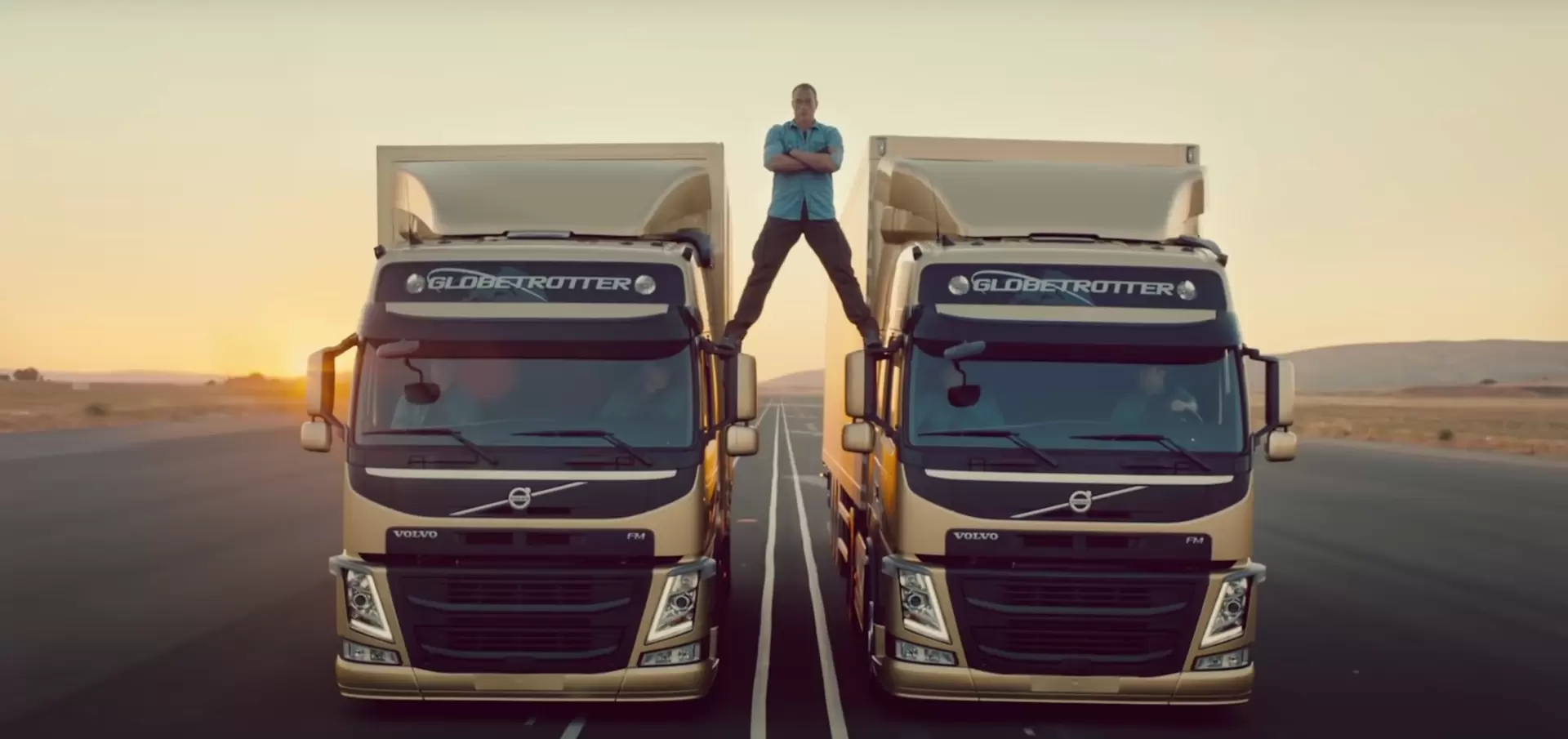
#6 Best Emotional Appeal Creative Ad: Lyndon B. Johnson and Democrats
In our overview, we cannot overlook the iconic “Daisy” ad from the 1960s. At a mere 60 seconds, this political commercial managed to change the course of American electioneering forever. Let’s view the advertisement, and then we’ll talk about it.
Crafted for President Lyndon B. Johnson’s 1964 campaign against Barry Goldwater, the “Daisy” ad showcased a young girl counting daisy petals, her innocent voice juxtaposed against the harrowing countdown to a nuclear explosion. It was an eerie, visceral representation of the potential stakes of the election. Without explicitly mentioning his rival from the Republican Party, Barry Goldwater, the underlying message was clear: the wrong leadership could lead the nation to nuclear catastrophe.
Johnson’s campaign architects painted Goldwater as a radical and cleverly altered his slogan “In your heart, you know he’s right” to “In your guts, you know he’s nuts”. Another ad technique was employed here: black propaganda – devoid of any creativity.
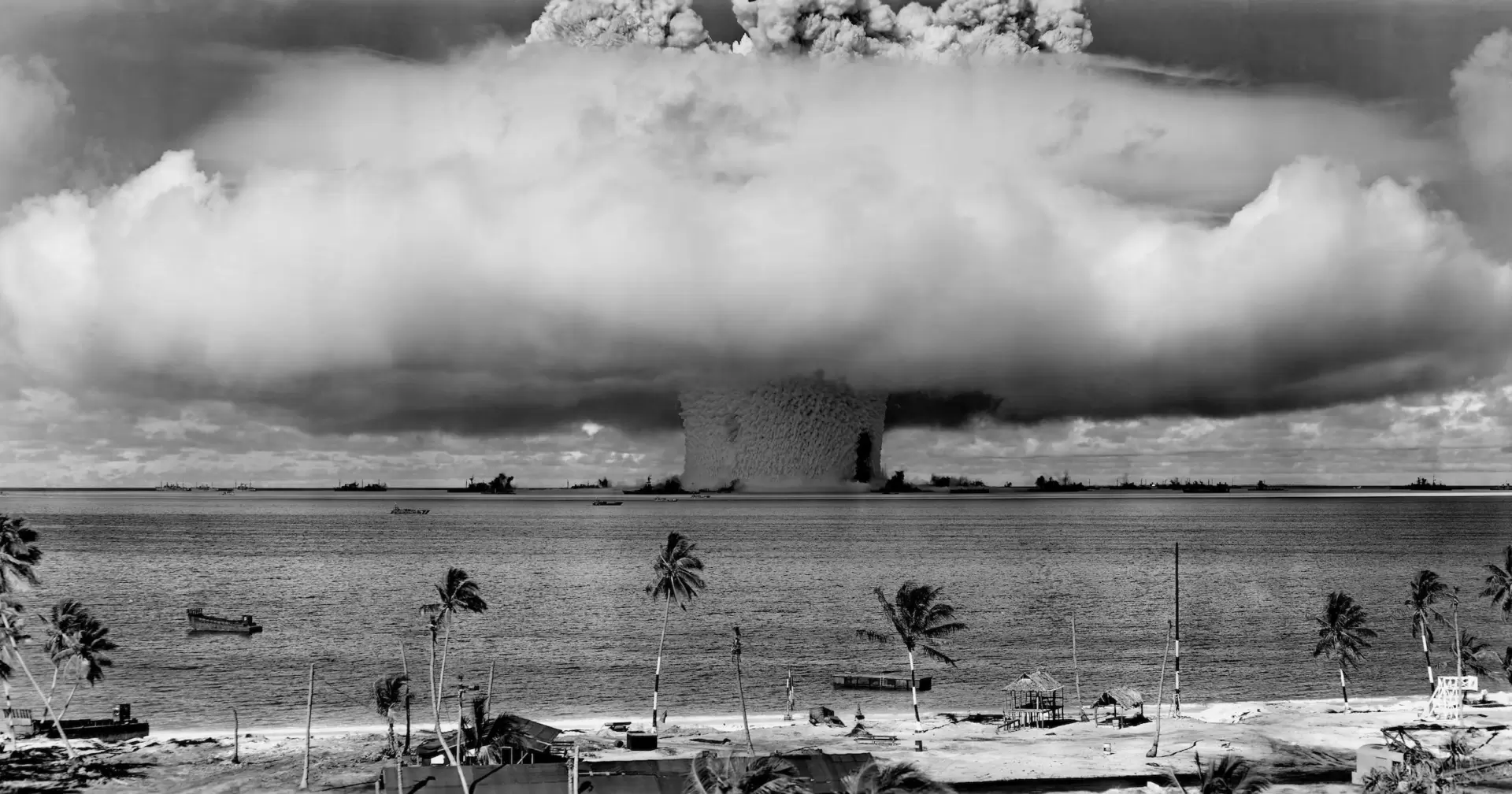
The genius of the “Daisy” ad lay in its subtlety. It didn’t rely on overt criticisms or traditional political jargon. Instead, it tapped into the primal fears of its audience, compelling voters to consider the gravity of their choices. The ad aired just once but left an indelible mark, serving as a poignant reminder of the profound impact that nuanced, emotionally charged advertising can have on the public psyche.
#7 Best Narrative Storytelling Creative Ad: Coca-Cola
Within our panorama of memorable campaigns, Coca-Cola’s “Brotherly Love” is a winner in the “storytelling” category.
Info: If a brand’s story resonates with consumers, there’s a 55% increased likelihood of future purchases, a 44% chance they’ll share the narrative and a 15% immediate purchase rate (S. Klongerbo, What does storytelling in marketing mean, 2023).
The said ad delves into the dynamics of sibling rivalry and affection, masterfully using the familiar ups and downs of brotherly interactions as its canvas. In the unfolding tale, Coca-Cola serves as more than just a beverage; it becomes the catalyst for moments of unity amidst the brothers’ playful rivalry. By embedding their product within this heartfelt narrative, Coca-Cola effectively utilizes emotional connection to build brand awareness.
The magic of “Brotherly Love” lies in its ability to weave a universal tale that viewers can connect with, proving that storytelling remains one of the most potent tools in the advertiser’s toolkit.
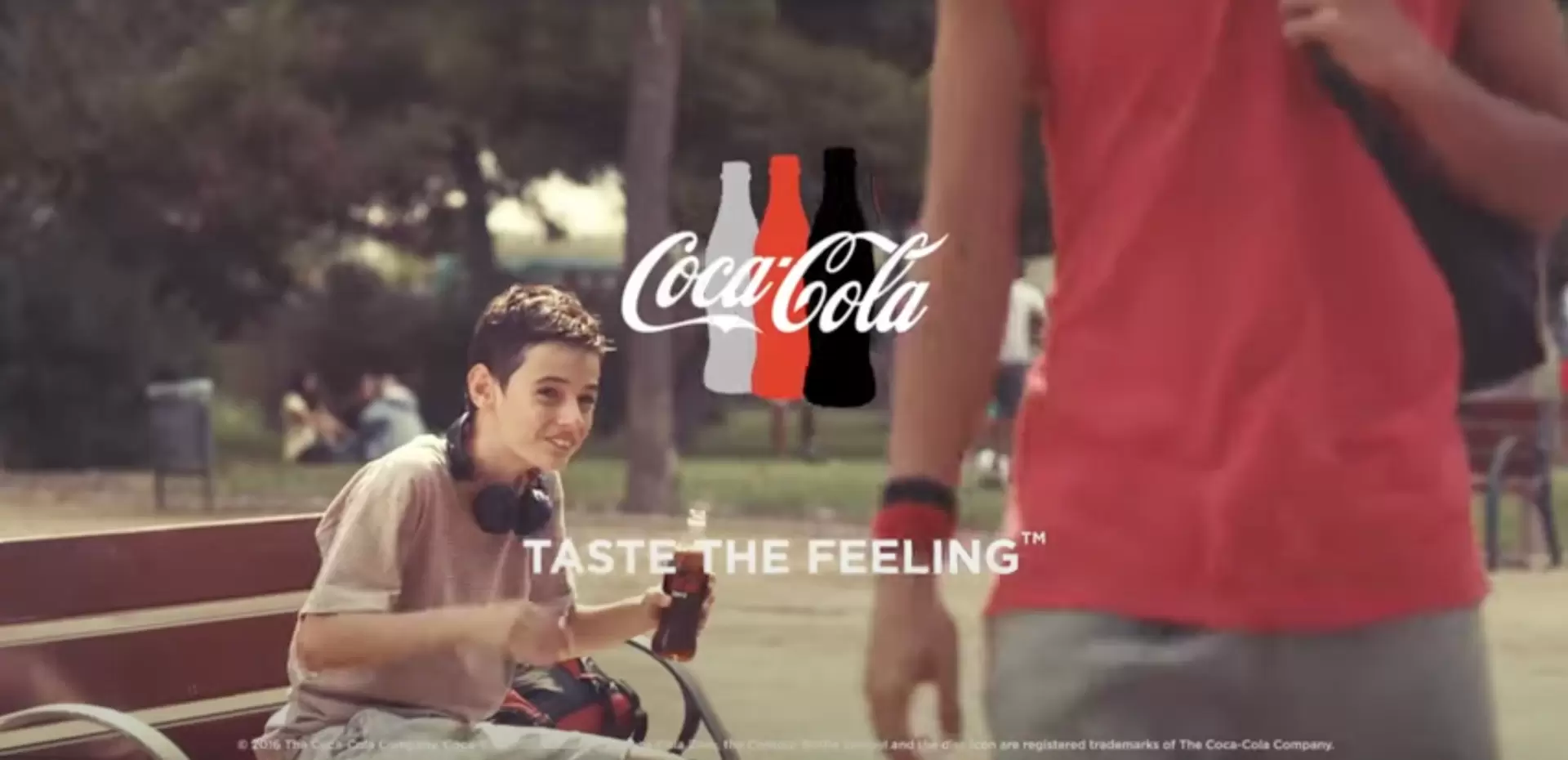
#8 Best Interactive & Immersive Creative Ad: Firm X
In the dynamic world of creative advertising campaigns, Salesforce’s Dreamforce Conference stands out as a masterclass in interactive and immersive promotion. Not just a typical conference, Dreamforce immerses attendees in a holistic Salesforce experience, letting them actively engage with the brand’s ecosystem.
By providing hands-on sessions, cutting-edge demos, and deep-dive workshops, Salesforce transforms the idea of a traditional conference into a lively interactive arena that boosts not just knowledge but also sales. Attendees don’t just passively consume information; they become active participants, shaping their experiences and forging genuine connections with the brand.
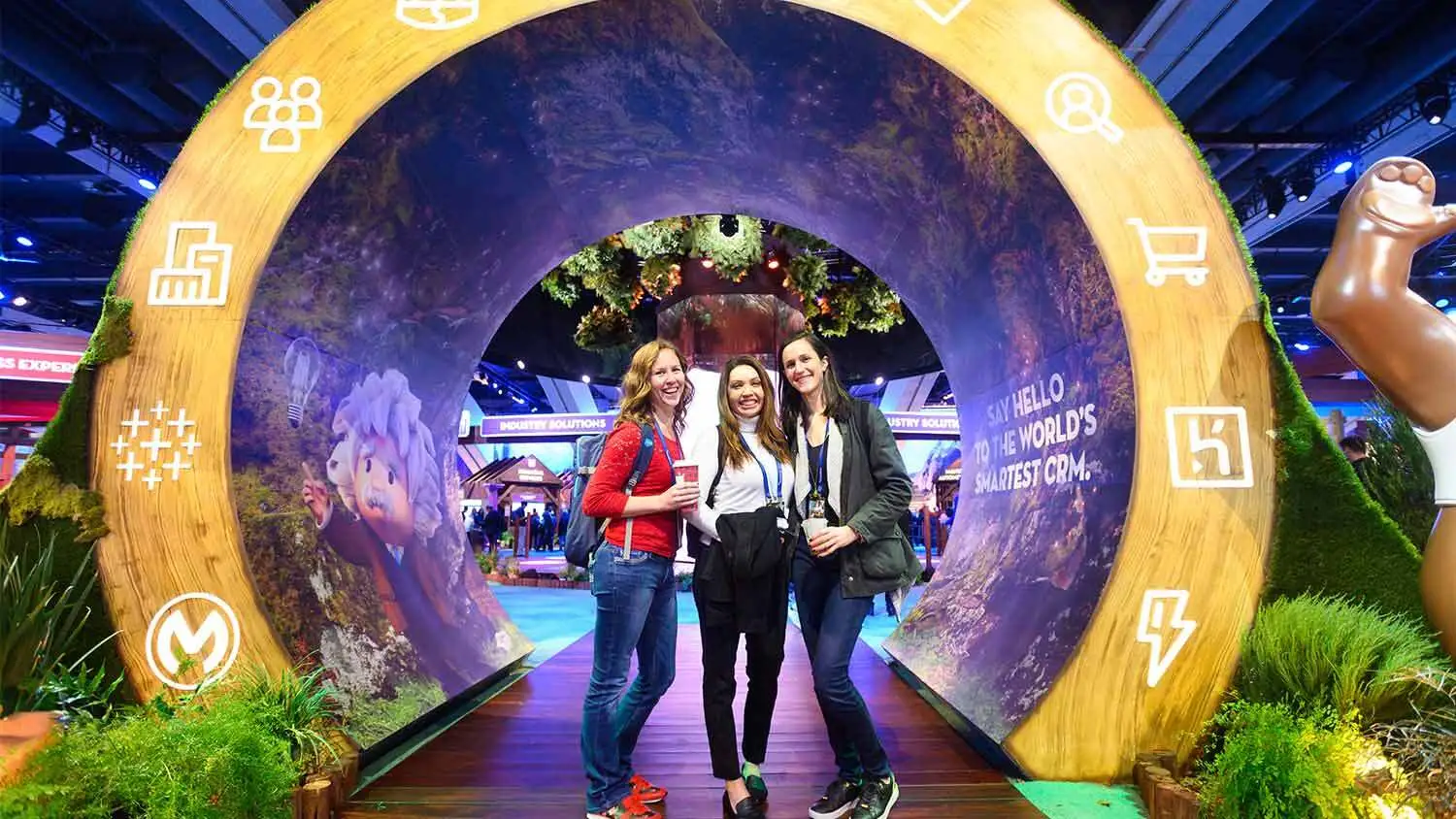
#9 Best Cultural Relevance Creative Ad: airbnb
Did you know that it’s the expectation of 67% of the public that companies should use their advertising to promote greater diversity and inclusiveness (ZipDo, Essential Diversity In Advertising Statistics in 2023)?
Airbnb responds to this demand exceptionally. In their prominent campaign “We Accept” they distinguish themselves through the clever use of cultural relevance. Set against the rising tide of global nationalism and tightened borders, this campaign took a bold brand stand.
Emphasizing universal themes of acceptance and belonging, Airbnb did more than just advertise their service. They tapped into a pressing societal conversation, intertwining their brand ethos with the broader narrative of unity in divisive times.
The true power of “We Accept” is its resonance with the zeitgeist. By taking a brand stand in such a clever manner, Airbnb showcased that advertising can be both a reflection and a driver of cultural values, leaving a lasting impression in the minds of viewers.
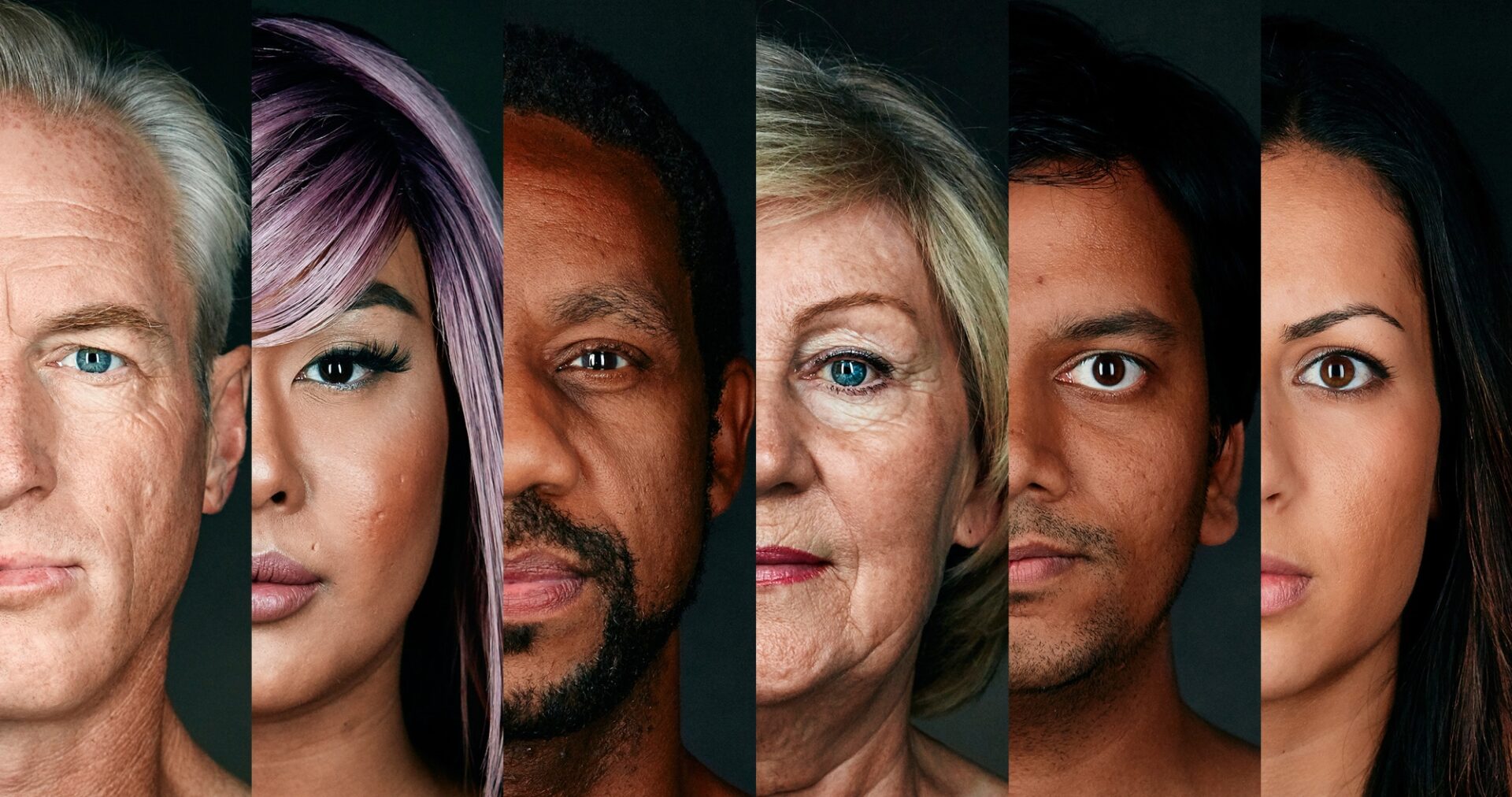
#10 Best Problem-Solution Creative Ad: Gilette
Among outstanding ad campaigns, Gillette’s “The Best A Man Can Get” stands as a paragon of the problem-solution approach.
The problem was universally felt by men: the ordeal of rough shaves, the discomfort of cuts, and the sting of burns. Gillette didn’t just highlight this pain point; they presented their razor as the ultimate solution for a flawless, smooth shave. The narrative was clear-cut and relatable, resonating deeply with those who have faced the woes of imperfect shaving tools.
The success of such ad campaigns underlines the power of understanding clients’ problems and streamlines creating long-lasting relationships with the company.
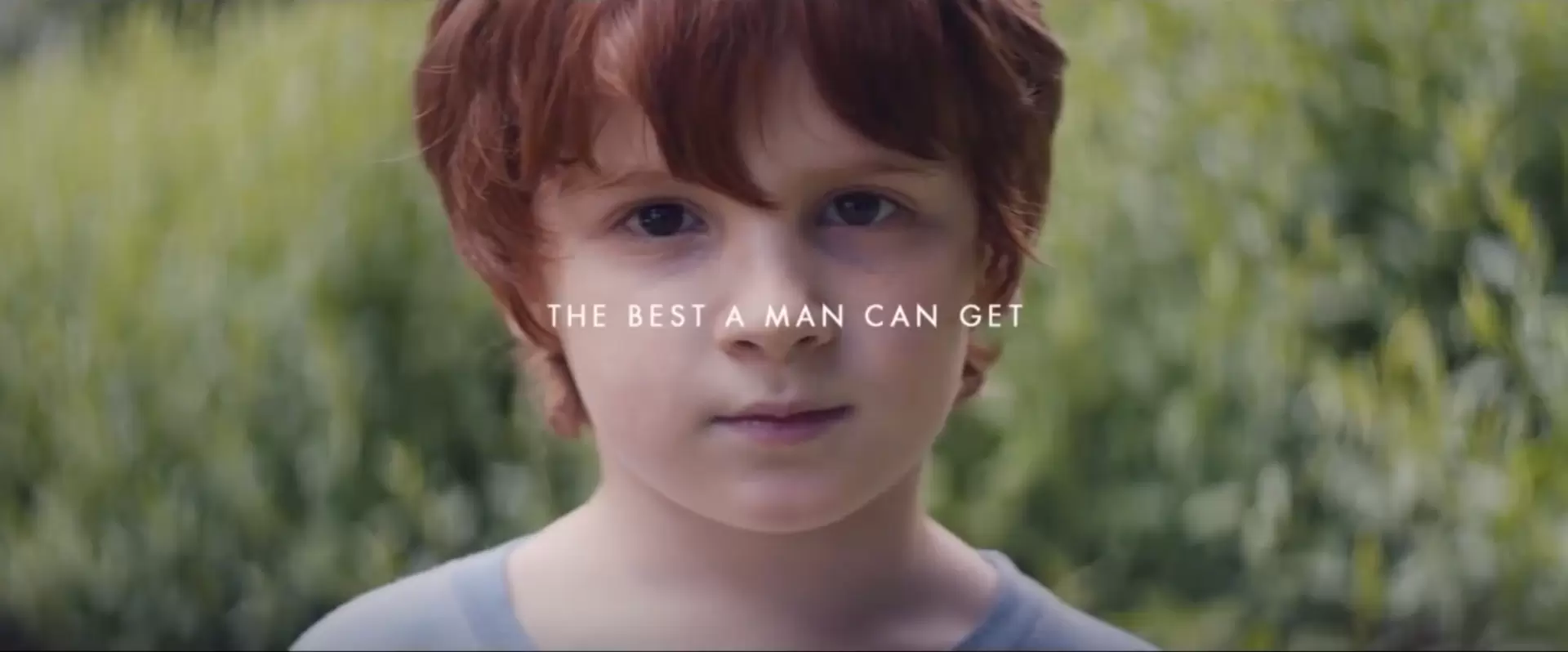
What Role do Consumer Feedback and Reviews Play in Shaping Creative Advertising Strategies?
Consumer feedback and reviews are invaluable assets for advertisers in quadruple meaning.
- Real-time Feedback: Consumer responses provide immediate insights into the effectiveness of an advertising campaign, highlighting resonating elements or potential areas of improvement.
- Highlighting Gaps: Reviews can reveal unmet needs or areas where a product or service falls short. Addressing these in advertising showcases a brand’s commitment to improvement.
- Boosting Credibility: Positive feedback can be integrated into campaigns as testimonials, offering authentic endorsements that foster trust among potential customers.
- Guiding Direction: Feedback acts as a compass for brands, ensuring that advertising strategies align with audience values and expectations.
In what Ways Does Creative Advertising Differ Across Various Industries Like Fashion, Tech, and Food?
Creative advertising is tailored to reflect the unique nuances, audiences, and goals of each industry it serves. Let’s check what are the key differences between a few large and affluent market branches.
- Fashion:
- Aesthetic-driven: Fashion ads prioritize aesthetics and style, often emphasizing the latest trends and designs.Emotion & Aspiration: These campaigns frequently tap into emotions, aspirations, and the desire for self-expression.Influencer Collaborations: Fashion brands often collaborate with influencers, leveraging their reach and appeal to target audiences.
- Tech:
- Feature-focused: Tech advertisements typically spotlight product features, innovations, and benefits.Solution-Oriented: They present tech products as solutions to specific problems or needs, emphasizing functionality and utility.Futuristic Imagery: Many tech ads employ futuristic visuals and themes to underscore the cutting-edge nature of their offerings.
- Food:
- Sensory Appeal: Food ads prioritize sensory experiences, using visuals, sounds, and descriptions to evoke taste and craving.Culture & Tradition: Many food campaigns highlight cultural ties or traditional recipes to resonate with specific audiences.Health & Nutrition: With a growing focus on wellness, many food advertisements emphasize nutritional benefits and healthy ingredients.
While these are broad generalizations, they capture the essence of how creative advertising is molded to fit the unique contours of each industry.
How have Technological Advancements Shaped the Landscape of Creative Advertising?
Technological innovations have revolutionized the world of creative advertising, introducing tools that allow for more targeted, immersive, and interactive campaigns. Digital platforms, coupled with Artificial Intelligence and data analytics, empower advertisers to personalize messages, enhancing engagement and resonance with their target audiences. Meanwhile, augmented and virtual reality provide avenues for brands to craft unparalleled immersive experiences, setting new benchmarks in how consumers interact with advertisements.
According to G2, an 80% increase in brand awareness is within reach through strategic digital advertising. Leading the pack in the digital ad market, search advertising boasts a significant market volume of $202.40 billion (S. Jayaraman, 90+ Advertising Statistics To Inform Your Ad Strategy in 2023).
However, this digital boom also brings challenges. The saturation of advertisements on online platforms means that capturing consumer attention is more competitive than ever. For advertisers, staying updated with technological trends and ensuring the relevance of their campaigns has become paramount to stand out in this bustling digital landscape.
Get 111 Landing Page Examples—The Ultimate Guide for FREE
What Impact AI Has on Creative Advertising?
Artificial Intelligence (AI) has significantly influenced creative advertising by streamlining data analysis, enabling brands to craft personalized ad campaigns based on user behaviors and preferences.
With AI’s predictive capabilities, marketers can anticipate consumer needs, making advertisements more timely and relevant.
Moreover, automated content creation tools powered by AI can generate ad variations at scale, ensuring consistent messaging across platforms while saving time.
What are the Ethical Considerations in Creative Advertising?
Advertisers must ensure honesty and transparency, avoiding misleading claims or exaggerations about products or services.
There’s also a responsibility to avoid promoting harmful behaviors or stereotypes, ensuring that content respects cultural and individual sensitivities.
Additionally, with the rise of data-driven advertising, there’s an onus on brands to handle consumer data with care, prioritizing privacy and securing personal information.
In essence, ethical creative advertising seeks to strike a balance between persuasive messaging and respecting the values, rights, and intelligence of its audience.
How does Cultural Relevance Play a Role in Creative Advertising?
By aligning ad content with cultural values, traditions, and current events, brands can forge stronger connections, drive engagement, and enhance recall. 67% of people believe that companies should promote a more diverse and inclusive society through advertising.This approach not only boosts the effectiveness of the campaign but also fosters trust, as consumers appreciate brands that understand and respect their cultural context.
Are there any Industries Where Creative Advertising Doesn’t Significantly Impact Sales?
While creative advertising generally benefits most sectors by elevating brand recognition and fostering consumer engagement, its direct impact on sales can vary across industries.
For instance, in industries where purchasing decisions are heavily based on technical specifications or regulatory compliance – like certain industrial equipment or B2B enterprise software – creative advertising might play a lesser role in driving sales compared to detailed product information or client testimonials.
Similarly, in sectors with minimal product differentiation, such as utilities or generic pharmaceuticals, the emphasis might be on pricing or availability rather than creative advertisement. However, even in these fields, creative branding can aid in long-term loyalty and overall brand perception.
How do Digital Creative Ads Compare With Traditional Ones in Terms of Sales Impact?
Digital ads, particularly those on social media and search engines, offer precise targeting options, ensuring that the message reaches a defined audience. According to eMarketer, as of 2021, digital advertising expenditures outpaced traditional methods (E. Cramer-Flood, Worldwide Digital Ad Spending 2021), a testament to its growing effectiveness and preference among businesses. Its real-time analytics also enable advertisers to tweak campaigns on the fly, optimizing for better results.
On the other hand, traditional advertising, which encompasses mediums like television, radio, and print, boasts broader reach, especially in regions with limited internet penetration. A Nielsen report highlighted that traditional ad channels still maintain a significant edge in overall reach, resonating with varied age groups and demographics. Radio ads are viewed as very or somewhat reliable by 60% of people aged 35-49, and TV is almost on par, holding the confidence of 59% within that age bracket.(The Nielsen Total Audience Report: Advertising Across Today’s Media, 2021). However, it often comes with a heftier price tag and lacks the granular tracking capabilities of its digital counterpart.
What Factors Determine the Success of a Creative Ad in Boosting Sales?
The right timing and placement of ads amplify their impact, ensuring they’re seen in a relevant context. Equally vital is a clear call-to-action, guiding viewers toward the intended outcome. The visual aesthetics of an ad, from its design to its relevance to the target audience, can significantly influence its success. Lastly, for brands active across multiple platforms, consistency in messaging and visuals is key to reinforcing brand identity and trust.
How does Creative Advertising Influence Consumer Perception?
A well-crafted creative advertisement can effectively communicate the Unique Value Proposition (UVP) of a product, differentiating it from competitors and positioning it in a favorable light.
For instance, an ad highlighting eco-friendliness not only promotes the product but also aligns the brand with environmental consciousness, resonating with environmentally aware consumers.
In an era where consumers are bombarded with information, standout creative ads can cut through the noise. They leave a lasting impression, foster trust, and can even shift previously held beliefs or perceptions about a brand.
Which is more Impactful: a Creative Ad With High Emotional Appeal or One With High Artistic Value?
Emotional ads are ideal when the goal is to build deeper connections with an audience, evoking feelings that anchor brand loyalty. They’re most effective for campaigns seeking to resonate on a personal or societal level.
In contrast, ads that emphasize artistic value are best suited for brands wanting to showcase innovation, luxury, or modernity.
However, the most memorable campaigns often fuse both approaches: using artistry to amplify emotion or vice versa, ensuring broad appeal and a lasting impression.
What to Avoid While Making Creative Ads?
While the allure of creative advertising is undeniable, certain pitfalls can undermine its effectiveness. Steering clear of these common mistakes ensures that your ad not only captivates but also communicates its message clearly:
- Ambiguity: Ensure your ad’s message is clear and not open to multiple interpretations.
- Over-complication: Avoid cramming too many elements or ideas into one ad.
- Stereotyping: Be wary of perpetuating harmful or outdated stereotypes.
- Ignoring the target audience: Always design with your core audience’s preferences and values in mind.
- Poor quality visuals: Invest in high-quality graphics, photography, and video.
- Being inauthentic: Authenticity builds trust; don’t pretend to be something your brand isn’t.
- Neglecting a call-to-action: Every ad should guide viewers towards a specific action or response.
- Overhyping: Ensure your ad’s claims are truthful and can be backed by evidence.
- Ignoring feedback: Constructive criticism can be invaluable for refining creative strategies.
What are the Myths About Creative Advertising?
The world of advertising, brimming with creativity and innovation, is also rife with misconceptions. Understanding these myths can prevent marketers from falling into common traps:
- More Creativity Means Higher Costs: Many believe that a creative ad must have a hefty budget. In reality, some of the most inventive campaigns have been produced on a shoestring.
- Creativity Is Just About Art: While aesthetics are crucial, creativity also encompasses clever messaging, unique strategies, and innovative use of media.
- Only Big Brands Can Afford to Be Creative: Even small businesses can harness the power of creativity, tailoring their approach to their specific audience and resources.
- Creativity Is Spontaneous and Unstructured: The best creative ideas often come from structured brainstorming, research, and iterative processes.
- All Publicity Is Good Publicity: A controversial ad might garner attention, but it can also alienate potential customers or harm a brand’s reputation.
- Viral Equals Success: Just because an ad goes viral doesn’t mean it effectively conveys the brand’s message or leads to increased sales.
- Data and Creativity Are at Odds: In the digital age, data-driven insights can fuel and refine creative concepts, leading to more targeted and effective campaigns.
Distinguishing between these myths and the realities of the advertising world ensures more informed, effective, and impactful campaigns.
What are Examples of Creative Media?
Creative media encompasses a diverse array of formats and platforms, from interactive webpages, across videos and social media content, to advergames, each offering unique ways to engage and inspire audiences. Let’s prepare a quick overview to catch the essence:
- Digital Experiences: Interactive websites, mobile apps, and immersive virtual reality (VR) installations that offer personalized user journeys.
- Video Content: Short films, animated explainers, and dynamic video ads that tell stories and convey messages in visually compelling ways.
- Social Media Campaigns: Hashtag challenges, influencer collaborations, and user-generated content initiatives that leverage social platforms’ networking power.
- Print Innovations: Augmented reality-enabled print ads, interactive billboards, and unconventional guerilla marketing placements in public spaces.
- Audio Advertising: Podcast sponsorships, bespoke jingles, and strategic placements within music streaming services.
- Gaming: Advergames and in-game advertising that integrate brand messages seamlessly into the gaming environment.

How do I get into Creative Advertising?
To get into creative advertising, curate a portfolio that demonstrates your creative range and expertise in market trends. Sharpen your skills in areas such as copywriting, design, and multimedia, and apply your marketing knowledge to create captivating campaigns. Collaborate with peers, undertake personal projects to test out ideas, and network with industry professionals to gain insights and opportunities in this dynamic field.
How to Use Landing Pages for Creative Ads?
Ready to dive in and try yourself? Landing pages are a great platform for creative ads. They are presented to both large and targeted audiences, so your message may instantly go global. Extensive personalization options and a bunch of additional tools enable you to create appealing and well-tailored surroundings for your ad creations.
In Landingi, you can not only build your pages (from scratch or based on one of the 300+ fully customizable templates) but also:
- generate messaging for your pages with AI (including copy for ads),
- customize it with videos, images, widgets, pop-ups, or dynamic content,
- create pages at scale with Smart Sections,
- measure effects of your campaigns via in-built analytics,
- and much more!
Just give it a free try.





